Home \ Knowledge Hub \ Focus on \ Focus On… Foot and Mouth Disease — The perspective from an endemic setting


01 Feb 2019
Focus On… Foot and Mouth Disease — The perspective from an endemic setting
SHARE

DR TIZIANA LEMBO
Senior Lecturer, University of Glasgow

ASHLEY RAILEY
PhD Candidate, Washington State University
.
The persistent degradation of animal productivity from endemic foot and mouth disease (FMD) has disproportionate impacts on the rural poor. Ashley Railey and Tiziana Lembo discuss the challenges, approaches and importance of targeted vaccination in eastern Africa.

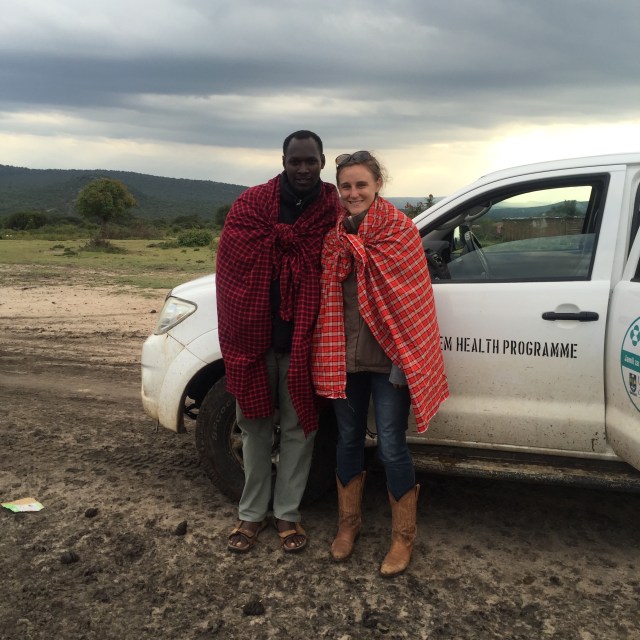
African Context
We all are aware of the devastation foot-and-mouth disease (FMD) causes when it infiltrates intensive livestock systems, as evidenced by modern outbreaks in the United Kingdom. Millions of dollars annually also go toward biosecurity measures to protect FMD-free countries from incurring the disease, as demonstrated in the United States’ current proposals for an enhanced vaccine bank. Yet we seldom discuss the persistent degradation of animal productivity from endemic FMD despite its disproportionate impacts on the rural poor.
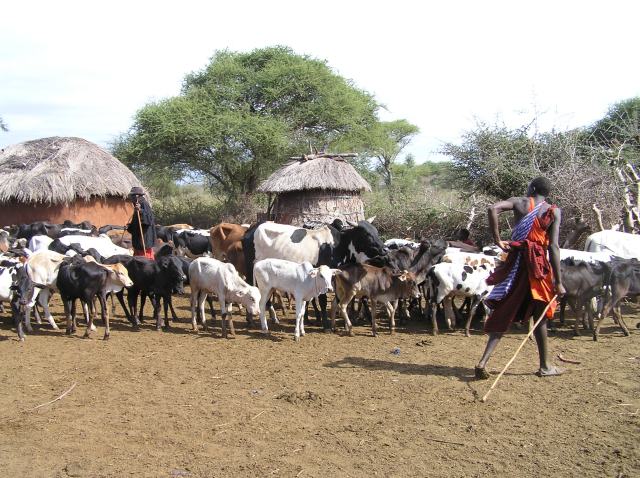
Did you know that in Tanzania:
- 50% of population maintains livestock
- FMD can occur up to 3 times a year in a household
- FMD causes 67% decrease in milk yields and 27% reductions in cash
- Loss of traction power reduces agricultural potential
- absence of formal control measures against FMD leads to increased antibiotic usage
In parts of Africa where FMD remains endemic and most livestock keepers live in extreme poverty, FMD-associated production losses amount to US$2.3 billion annually. In Tanzania, where FMD can occur up to 3 times a year in the same household and over 50% of the population maintains livestock, we found FMD causes 67% decreases in milk yields, 27% reductions in cash from livestock sales, and losses to traction power that reduce agricultural potential. For livestock-dependent households, these impacts directly hinder progress towards sustainable development agendas to reduce poverty. In the absence of formal control measures (such as vaccination) households seek informal insurance against production losses, including maintaining higher livestock numbers and increased therapeutic antibiotic usage.
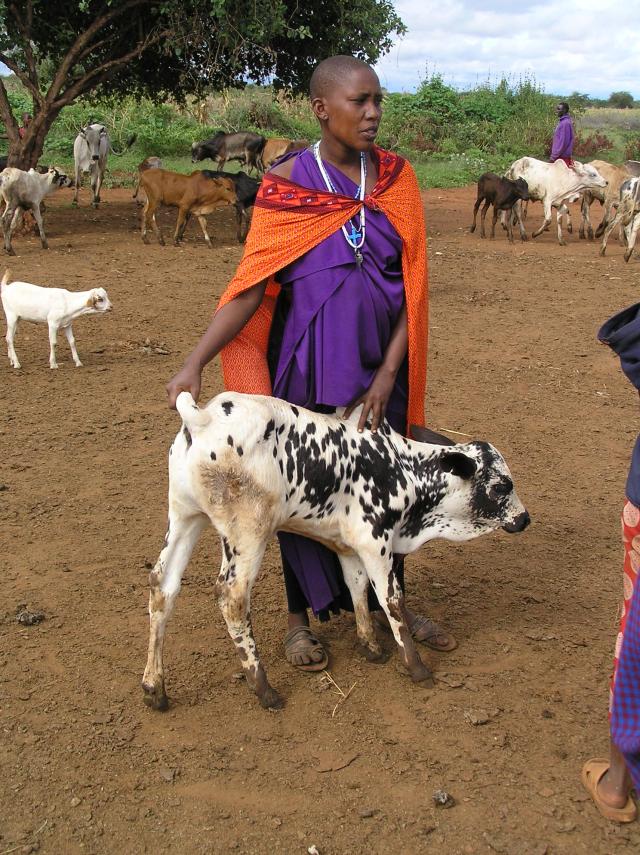
Regular control strategies are largely unfeasible in East Africa due to:
- complex dynamics of viral serotypes and lineages
- limited surveillance resources
- small-scale livestock keeping
- reliance on moving animals
- competing priorities
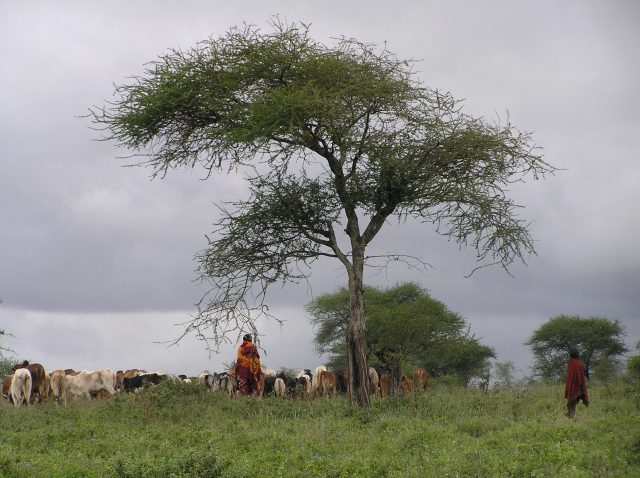
Problem
Vaccination has successfully controlled FMD in other parts of the world, but the complex spatial and temporal dynamics of the different viral serotypes and lineages in East Africa, coupled with limited surveillance resources, constrain our ability to devise appropriate vaccination strategies in this part of the world. Furthermore, small-scale livestock keeping in most of Africa means communal grazing/watering and frequent encounters with wildlife and other livestock. The reliance on moving animals makes a system based on restricting movements and mass vaccination (as used in southern Africa) unfeasible in eastern Africa. Importantly, FMD vaccination would be the responsibility of the household. When the household has competing responsibilities to ensure the family’s health or to send kids to school, livestock vaccination may become a second priority.
Investigating potential for FMD control through vaccination includes:
- Understanding routes of transmission: different types of FMDV occur in cattle and buffalo, indicating limited transmission from wildlife
- Predicting outbreak patterns
- Identifying potential vaccine strains ahead of the wave of infection
- Changing attitudes: most households prefer to vaccinate in emergency
- Focus on high quality vaccines
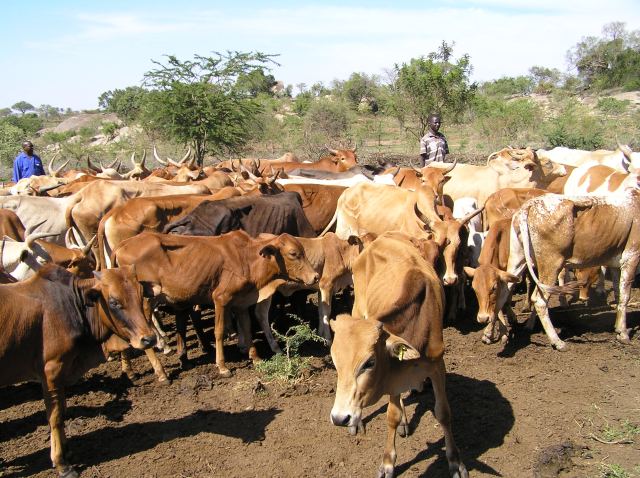
Multidisciplinary Approach
To understand how to control FMD in East Africa and explore the potential for vaccination, we investigated the disease from multiple perspectives in Tanzania.
First, is there transmission between wildlife and livestock that might compromise livestock vaccination efforts? FMD affects ungulates that include cattle, goat, sheep, pigs, and buffalo. The latter can maintain FMD in southern Africa where the disease is well controlled in cattle. These animals occur in high densities in Tanzania, sharing the same environment due to lack of separation between protected areas and human settlements, thus increasing the potential for disease transmission. However, we found livestock-related factors (livestock management practice, herd size, and new additions to the herd) rather than contact with buffalo drives FMD in cattle, which are the most affected species. Additionally, we detected different types of FMD viruses in cattle and buffalo populations, indicating limited transmission.
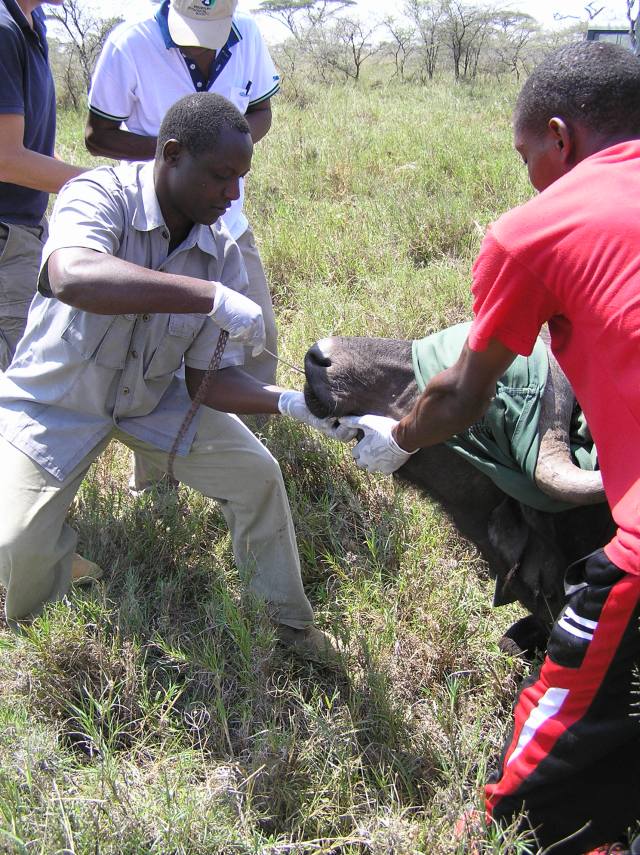
Second, is vaccination feasible given that no routine polyvalent vaccines exist in the strain combinations necessary for Tanzania (A, O, SAT 1 & 2)? To answer this, our study investigated the spatial and temporal dynamics of virus circulation over multiple years. We demonstrated a regularity of FMD outbreaks, each caused by a different dominant serotype, sweeping slowly across the region. We identified potential vaccine strains to be used against these serotypes ahead of the wave of infection in monovalent form until high-potency polyvalent vaccines become available.
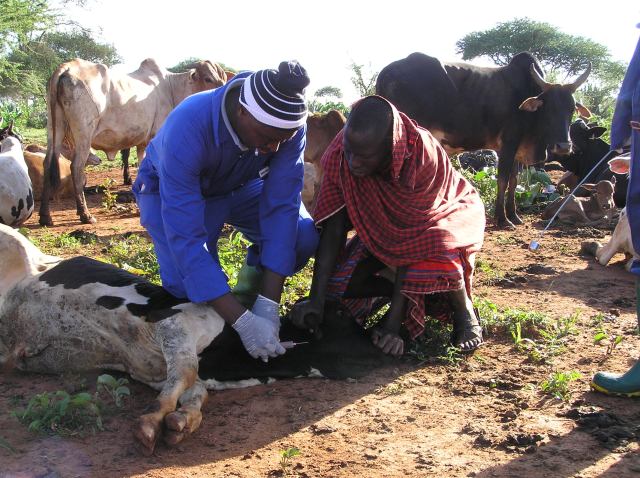
There is need for quality vaccines but past experiences with poor ones increase concerns and hinder vaccination strategy.
Finally, if potential vaccine candidates exist and we can predict outbreak patterns, what determines household adoption? We surveyed households to find that given the choice between a routine vaccination plan (every 6 months) and an emergency vaccination option (during an outbreak), households prefer to vaccinate in an emergency. Importantly, we found that households recognize the need for quality vaccines but past experiences with poor vaccines augment their concerns for either vaccination strategy.
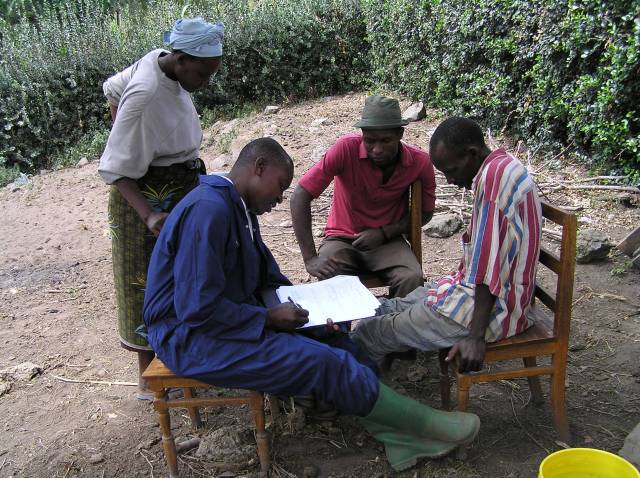
Implications
FMD threatens more than intensive production systems in the developed world. Long-term reductions in animal productivity from FMD in the developing world cause great concern and demanding solutions for households that rely daily on their animals. However, the limited resources available to households, particularly in the form of high-quality vaccines, explain their reservations about the effectiveness of current options.
Targeted vaccination with high-quality vaccines focusing on livestock is likely to be most effective. The challenge is in timely delivery and removing barriers such as disbelief in the effectiveness of vaccines.
Our research points towards targeted vaccination with high-quality vaccines as a control option. Without the need to separate livestock and wildlife, vaccination measures that focus on livestock are likely to be effective and have less of an environmental impact than the wildlife-livestock separation approaches in southern Africa. The challenge remains to provide these vaccines in a timely manner and assure households that they will possess the necessary coverage to protect their assets.
The views and opinions expressed in this article are those of the authors.
ASHLEY RAILEY
PhD Candidate, Washington State University
DR TIZIANA LEMBO
Senior Lecturer, University of Glasgow

